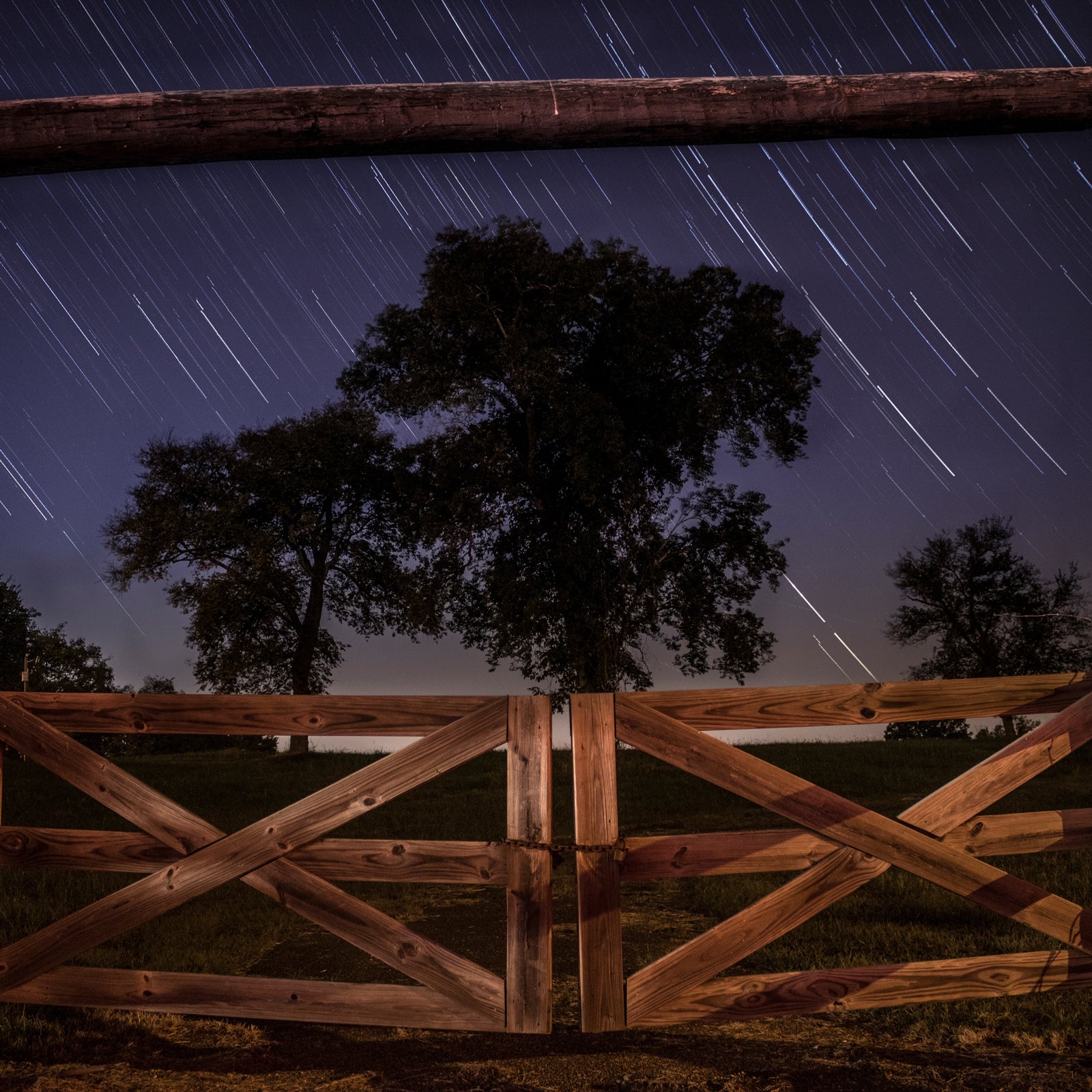To photograph the circular streaks of light in the sky created as the earth spins on its axis past the galaxies, you need a good camera, a cable release, a tripod, a pitch-black moon-free night, in a location that’s far from the glow of a big city, streetlamps, or other light pollution … and patience.
Long exposure photos require a camera with a bulb setting that lets you hold the camera’s shutter open for minutes not seconds. Some point-and-shoots cap open shutter time at 30 seconds. Most pro-sumer and pro level SLRs offer an extended shutter open option. Fit your camera with a fisheye lens, somewhere between 14-18 mm.
Place your camera on a small, low tripod—one that won’t jiggle in wind, or shift under your camera’s weight.
Attach a to your camera, which will let you lock your shutter open—it’s impossible to hold the shutter open manually for any prolonged period of time without causing camera shake. Don’t have one? Improvise. The cap from a hotel shampoo bottle, a rubberband, and the self-timer setting can also work.
Compose your shot. Include a stationary object in the foreground to ground your photo and give context to the swirling stars. South African nature and wildlife photographer says, “ensure that you have something in the foreground to anchor the starry sky. But leave space in the foreground to show the star trails moving through.
Set your focus on infinity so that the stars are crisp, and check that your foreground is also in focus. If it is not, bump your F-stop one stop. Place the North Star in the middle of your view screen in the northern hemisphere, and your star trails will form circles in your image. Offset the North Star, and the stars will form curved lines of light.
Vermont-based editorial, commercial and wedding photographer says, “It’s all about experimentation—there is no golden rule—except to start with your camera in manual mode at ISO 100.” Also, in your camera setting, turn on long exposure noise reduction. Duback and Powell recommend choosing an aperture setting, or f-stop of 5.6 or higher—enough to bring foreground and background into focus. Duback recommends exposures ten, 20 and 30 minutes long. Powell says set your camera for an hour and a half minimum.
“The tricky thing about star trails photos,” says Duback, “is that you’re investing a lot of time in each image. Every time you bump the aperture setting one higher, you get more depth of field—more things will be in focus parts of the frame—but it doubles your exposure time.
One you have taken your 10-minute exposure and the camera has processed the image, check your view screen on the back of your camera and make adjustments based on what you see. If the image is too bright, step down your f-stop—change it to a higher number–or reduce your shoot time. If the trails aren’t long enough, keep the shutter open longer—though you may need to compensate by stepping down the f-stop. One f-stop down at double exposure time will give you longer star trails. If your photo is too bright, go one f-stop down and 150% of your original exposure time might get you the results you want.
Don’t forget: for every minute your camera lens is open, your camera will needs one minute to download the image and apply noise reduction. So, release your shutter after a 10-minute exposure, and it’ll take another 10 minutes before you can shoot again. Always start with a fully charged battery, and have backups. When your battery drops below half charge, as soon as your image is shot and the camera has stopped processing, swap it out.
calls out the best night sky pictures with an . This year star trails didn’t make the cut, but aurora borealis (Northern lights) and a comet did.


